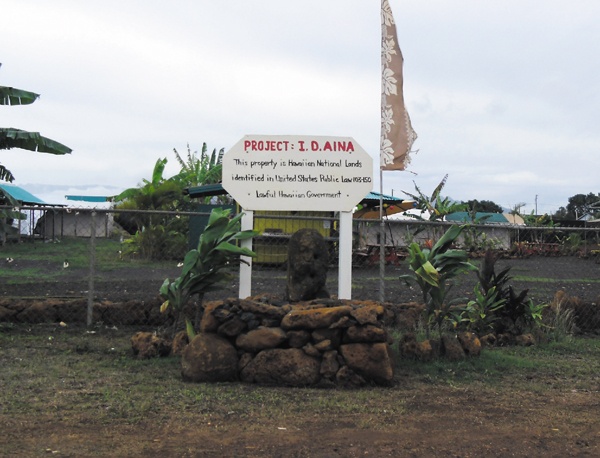LIHUE — To an untrained eye, it can appear to look like just a pile of rocks. But the structures signify much more than that. For the last year or so, life partners Keo Kauihana and Susanne Gottschalk have been
LIHUE — To an untrained eye, it can appear to look like just a pile of rocks.
But the structures signify much more than that.
For the last year or so, life partners Keo Kauihana and Susanne Gottschalk have been part of a small team in Anahola dedicated to maintaining a culturally significant ahu — or stone altar — near the Anahola Marketplace.
On Sunday, the two discovered that the structure, which identifies and marks Hawaiian National Lands, had been severely damaged.
Whether it was intentional remains unclear.
“It could have been just an accident,” Kauihana said. “But people got to know what the purpose of those rocks (are).”
The Anahola ahu was built as part of the Lawful Hawaiian Government’s “Project: ID Aina,” established to “mark Hawaiian government lands occupied and controlled by entities other than the Hawaiian Government, whether they are federal, state, county or private party,” as stated on the LHG’s website.
The plaque which adorns the ahu reads, “This property is Hawaiian National Lands identified in the United States Public Law 103-150 — Lawful Hawaiian Government.”
Adopted in 1993 and informally known as the Apology Resolution, Public Law 103-150 is a Joint Resolution of the U.S. Congress acknowledging and apologizing for the Jan. 17, 1893, overthrow of the Kingdom of Hawaii.
Fortunately, only a portion of the ahu was broken, according to Kauihana, who has since rebuilt it.
Because the ahu is protected by Hawaiian law, Kauihana said they filed a report. County spokeswoman Sarah Blane said there was no evidence to suggest criminal intent.
“It appears that someone may have backed their vehicle up into the ahu, damaging a portion of it,” she wrote in an email.
Blane encouraged anyone with information to contact KPD at 241-1711.
Kauihana said a rededication of the structure will likely be scheduled for a later date.
Gottschalk said she believes it is important for people living in Hawaii to understand the Hawaii sovereignty issue, as well as all the different entities and their legal status.
“Most people have no idea what it is,” she said of the structure. “And most people don’t take seriously the rights that are behind it.”
Kauihana said discovering the damage Sunday morning was an emotional experience, but that similar incidents have occurred in the past.
In March, contract workers for the County of Kauai dismantled an altar in the state right of way at Wailua Beach, in order to continue construction of Ke Ala Hele Makalai (multi-use path). At the time, some said the altar marked the location of a sacred heiau that was once in the area.
• Chris D’Angelo, environmental reporter, can be reached at 245-0441 or cdangelo@thegardenisland.com.


